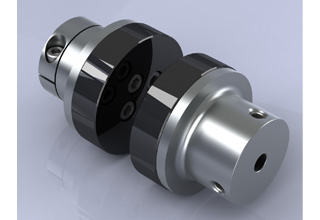Another advantage magnetic couplings have over their physical brethren, is that since there are no contacting parts in the coupling, wear is virtually nonexistent. Magnetic couplings also have a built in safety feature where, in the event of an overload on the coupling, it will shift to the next position and keep going. Since the couplings use permanent magnets, no external power source is needed.
Magnetic couplings do have their share of disadvantages. Magnetic couplings can typically only handle light torque loads and applications with either gradual starts, or very low rotational inertia of the driven side of the system. They are also rather large in diameter, considering their relatively light torque load. The couplings also have moderate radial loads on support bearings.
